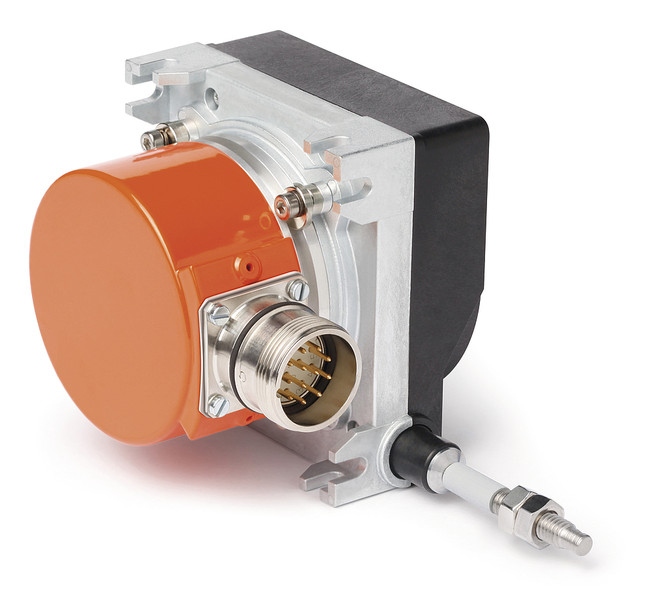Blog
Recent Posts
Position, Speed, Inclination Encoders With SAE J1939 And CANopen Interface
Posted by on
Siko (Germany) introduced their wire-actuated Pure.Mobile encoder family that measures position, speed, and inclination using an integrated single-axis inclination sensor. The encoders' sensor data utilizes serial protocols, including CANopen, CANopen safety, and SAE J1939.
Mobile machines must always function precisely and efficiently, whether lifting platforms, mobile cranes or self-concrete pumps. Sensors are suitable for detecting the machines' movements, and the wire-actuated encoders of the Pure.Mobile family can record several simultaneously.
Various sensors are needed to identify all geometric positions of a boom/lifting mast in mobile machines or industrial trucks. In addition to wire-actuated encoders for detecting linear positions, rotary sensors or inclination sensors detect rotational movements. All these sensors are crucial for the machine's workflow and stability. However, multiple sensors increase complexity due to additional cabling and assembly costs and higher product costs.
The series' central components are wire-actuated encoders of the SG31 and SG61 types, which have a maximum measuring length of three meters to six meters. In addition, integrating the latest generation of inclination sensors combines the detection of position and speed with the measured value of inclination. The SG121 and SG150 variants complement the two integrated inclination sensors, which deliver a maximum measuring length of 12 or 15 meters.
The integrated single-axis inclination sensor is available as an option; it measures inclinations in the range of ±180 ° with a resolution of up to 0,001 ° and accuracy of ±0,2 °. These features allow the sensor to detect small deflections. In addition, its integrated temperature compensation keeps the values steady over the entire measuring and temperature span. The sensor data transmission is managed via a CAN Bus port, supporting serial protocols such as CANopen, CANopen safety, or SAE J1939 interface.
All sensors of the series function according to the requirements of mobile machines, which includes an E1 approval from the Federal Motor Transport Authority and EMC (electromagnetic compatibility), shock, and vibration resistance.
Teensy 4.1 Triple CAN Bus Board with 240x240 LCD and Ethernet
The Teensy 4.1 board comes with triple CAN connections, two CAN 2.0B and one CAN FD, and an Ethernet magjack. It can be powered by an external +12 VDC with reverse voltage protection. Included is also a 240x240 wide-angle IPS TFT LCD display.
The Teensy 4.1 is an Arduino-compatible board with an Arm Cortex-M7 microcontroller running at 600 MHz. The board is compatible with the Arduino IDE and the Arduino library. In most cases, code written for another Arduino board works with minimum changes on a Teensy. As the name implies, the board is tiny. For example, the current form factor is only about 18 by 36 millimeters. However, do not let the size mislead you; these boards pack a ton of functionality.
 Loading... Please wait...
Loading... Please wait...


